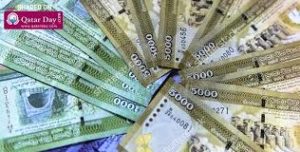As from midnight tonight, 31st March 2017
President Sillysena has declared that all large notes in circulation will cease to be legal tender as from midnight, tonight (31st March, 2017)
This follows the overwhelming success of a similar masterstroke by his Indian Counterpart, Prime Minister MOGLI in November last year.
With one single directive, all black cash was eliminated and the banks recorded record deposits ever since. Being hard pushed to raise funds to repay foreign loans, the GOSL had to act swiftly.
The Victory Rs./ 1,000 note

Parliament was not privy to this bombshell announcement. Ministers and Members of Parliament were only told, in strict confidence, to A?quickly dispose of their hordings of A?the controversial Rs./ 1,000 “Victory” A?note. This was issued by a former Government.
Many believe that a huge warehouse full of such notes still exists.
Largest legal tender note as from today:
 This is enough to buy 2 Cigarettes.
This is enough to buy 2 Cigarettes.
Statement from Temple Trees:

“I have reached today’s decision to demonetize Rs./500 up to the Rs./5000 currency notes in circulation in the economy as bold and revolutionary, and one that will have tectonic impact on the ubiquitous parallel economy in the country. The move will significantly strengthen the government’sA?systematic effortsA?(including special investigation team on black money, amending DTAA with India, Mauritius and Cyprus, amending the Benami Transactions Act, and the more recent Income Declaration Scheme) over the last two years to curb black money in the economy”
A?USAIDs Press release:

“In a single master stroke, the government of Sri Lanka has tackled all three malaises plaguing the economya??a parallel economy, counterfeit currency and terror financing”
Statement by Central Bank warden Mr. India Rancit Coma- Rastaswammy:

“I am honoured that the Government has followed my advice”
With our latest move, it is reasonably clear that the economy stands to benefit on several fronts:
1. Boost deposit base and savings
Global agencies have pegged the size of the parallel economy with the US $ at close to 23% as of 2007. Basis this, we estimate unaccounted cash in the economy to the tune of Rs./4500 billion, of which a certain significant proportion will make its way to the banks, thus boosting deposit base as well as financial savings:
- The banks’ deposit base is expected to receive a fillip of 0.5-1.4% of GDP.
- In turn, financing savings can be expected to rise by close to this proportion due to switch from savings from unproductive physical assets to financial assets.
2. Improve monetary transmission and reduce lending rates
- A rise in deposit base will allow banks to lower the blended cost of funds as higher CASA (current accounts, savings accounts) deposits help to replace the high cost of borrowing and lower overall cost of funds. We expect banks to reduce deposit rates by ~125 bps over the next six months.
- The new regime of MCLR (Marginal Cost of Funds based Lending Rate )will immediately take into account the lower cost and will thereby lead to a decline in lending rates, which will boost economic activity in the medium term.
3. Create room for further monetary accommodation
- With improved monetary transmission, economic efficiency and structural moderation in currency in circulation, there is likely to be a greater room for the RBI to ease monetary policy rate further. I am hopeful that the RBI will ease by another 100 bps in 2017-18 to a repo rate of 4% by March 2018.
- The piecemeal liquidity support from OMO purchases will now to a larger extent be addressed by the structural change in currency demand
4. Ready, steady,A?now go: financial inclusion via Jan Dhan
Over the last two years, while the number of Jan Dhan accounts has recorded a stellar growth, the share of these accounts in total deposit base of the banking system has remained under 1%. The demonetization drive of higher denominated notes should give a push to cash deposits in Jan Dhan accounts, of which close to 43% so far have remained dormant. In addition, the move will help to inculcate banking habits among the largeA?unbanked Cost of depo-provera at planned parenthood A?population in the country.
5. Support government finances
- With some part of unaccounted money making way into the formal channel, the government stands to benefit from higher income tax collections. This should help cushion the government’s FY17 fiscal deficit target, especially post the shortfall in anticipated spectrum revenues.
- The latest move will move the economy from the unorganized to organized sector, dovetailing into the GST architecture that is expected to come on board next year. This is likely to enhance the government’s ability to tax commercial transactions resulting in a structural improvement in tax to GDP ratio in the economy.
The Indian economy has been provided a new lease of lifea??a “reset” if you willa??with huge positive implications for liquidity, inflation, fiscal and external deficit in the short term.
6. Positive impacts from a bond market perspective
-
Amoxil with aspirin buy
- Improvement in bank deposit base leads to higher SLR (statutory liquidity ratio) demand.
- On the supply side, with tax buoyancy seeing an improvement, supply of g-secs is likely to get more rationalized due to gradual reduction in fiscal deficit over time as the impact of FRBMA (Fiscal Responsibility and Budget Management Act) is underway.
- Anticipation of monetary easing to further support bonds.
7. Rise in GDP growth potential
While there are short-term implications for growth in cash-intensive sectors such as real estate, construction, and discretionary household consumption in general, I believe that long-term benefits for GDP growth will outweigh the short term transitional impact. We are now surely heading towards a 9% GDP growth by FY2018-19.
Conclusion
In a single master stroke, the government has attempted to tackle all three malaises currently plaguing the economya??a parallel economy, counterfeit currency in circulation and terror financing.
In addition, the Sri Lankan economy has been provided a new lease of lifea??a “reset” if you willa??with huge positive implications for liquidity, inflation, fiscal and external deficit in the short term. Over the next two-three years, improvement in Sri Lanka’s position on transparency and corruption in the global stage will further add to its investor appeal. With GST on the anvil, Sri Lanka is now on the cusp of higher growth in the medium terma??to be steered by the organized sectors including MSMEs and the revival of the private sector capex cycle.

 Arugam Forum
Arugam Forum Arugam Photo Galleries on Picasa
Arugam Photo Galleries on Picasa Old Website
Old Website Press Coverage
Press Coverage Surf Forecast for Arugam Bay
Surf Forecast for Arugam Bay
The fiscal outlook and the long term projections look to be on a positive trend.
I have burnt all of my currency to save on kinderling. Thanks for the up to date accurate information.